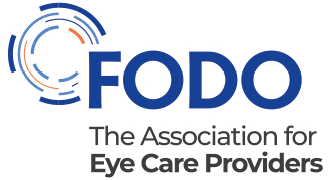Updates
At a glance
- GOC has issued 12 standards, in three interrelated sections, which registered optical businesses must meet as part of their GOC registration
- This guidance highlights the standards you need to pay most attention to and provides advice on meeting them, including using existing and sector approved resources.
Contents
Background
The General Optical Council's (GOC) Standards for Optical Businesses came into effect on 1 October 2019, replacing the GOC's Code of Conduct for business registrants. They broadly reflect the GOC's standards for optometrists and dispensing opticians and optical students [1, 2].
Twelve business standards are outlined in three interrelated sections: Patients, Culture & Governance, and Staff. Many of these reflect existing GOC standards and other statutory or regulatory requirements but consolidate them for GOC purposes.
FODO supports these standards and has welcomed the GOC's openness in developing them.
Scope
The new standards apply to all GOC registered bodies corporate across the four countries of the United Kingdom whatever their size or business structure. They will be used as the benchmark against which the GOC assesses an optical provider's 'fitness to carry on business' - for example, as part of an investigation or disciplinary hearing:
- "If someone raises concerns about your fitness to carry on business, we will refer to these standards when deciding if we need to take any action. You may need to demonstrate that your decision-making was informed by these standards and that you have acted in the best interests of your patients and the public." [3]
It is important that you can demonstrate compliance with these standards as a condition of registration.
The GOC also hopes non-GOC-registered optical businesses will adopt the standards voluntarily. This is until the government legislates to give the GOC powers to regulate all optical businesses providing protected functions, which remains the GOC's long-term aim.
What has changed?
The new standards build on the previous Code of Conduct for Business Registrants but have been updated to reflect subsequent changes in the healthcare operating environment such as safeguarding, new data protection laws, the duty of candour and concepts of clinical governance. The GOC recognises that the standards "largely reflect what is good practice already" [4].
You are advised to review your policies to demonstrate compliance in the following areas, which we are focusing on either because they are new or have been reformulated by the GOC.
- Safeguarding
- Whistleblowing/Speaking up
- Candour
- Commercial issues
- Equality, accessibility and safety
- Information
- Consent
- Data-security, record-keeping and audit
- Clinical governance
- Referrals
- Complaints
- Professional and human resources systems
- Supervision
- Students.
This guide deals with each issue in turn. Quotation marks enclose direct quotations from the standards and standard numbers are in brackets for ease of reference.
You should also read the full General Optical Council Standards for Optical Businesses - they are a short read - and contact us directly if you need any help with any of the requirements.
The GOC standard says optical businesses should have processes in place "for staff to report any safeguarding concerns and encourages them to do so" (1.1.2).
You will fully meet these safeguarding requirements, if you have implemented the Optical Confederation's Guidance on Safeguarding, mental capacity, deprivation of liberties and the prevent strategy - protecting children and adults at riskTransparency is the key to patient safety and most businesses have a system:
- for encouraging staff to raise concerns about patients, colleagues or public safety, confidentially if necessary
- to resolve these at practice/business level, or
- to escalate them to a higher authority such as the NHS or a health regulator (1.1.3-1.1.5).
These processes are known as 'speaking up' or 'whistleblowing' and are a key aspect of professionalism and professional leadership at all levels. As safety is always the number one priority, you should encourage staff to speak up.
A disclosure, even if unfounded, should not in any way affect the status, standing or rewards within the business of the person speaking up (unless maliciously motivated). As the GOC notes, "certain aspects of whistleblowing" are protected by the law (1.1.5). The Optical Confederation will be issuing further guidance on this in November 2019.
Meanwhile, it is important for businesses to recognise a 'speaking up' or 'whistleblowing' issue or disclosure when it is raised. This applies even if the issue is:
- not presented as such or recognised as such by the person making the disclosure
- not the prime purpose or motivation of the person making the disclosure
- only ancillary to the issue being raised or complained about.
You can contact us if you need any advice on whistleblowing or speaking up.
When a person is harmed, you must be open, honest and transparent with them.
This duty introduced in 2015 only applies when something has gone wrong and the person concerned (patient, member of the public, or colleague) has suffered physical or psychological harm or distress, or where there might be implications for their future care. It does not automatically apply to all complaints from patients or against other businesses or practitioners.
Under the duty of candour, explaining that something has gone wrong and apologising is not an admission of liability. It is just a natural human and professional response to another person's upset and distress.
The standards require optical businesses to foster "a culture of candour within the business by encouraging honesty" and to have "a good knowledge of any contractual or statutory duties of candour that are applicable to your business". (2.1.1)
You can download the accessible FODO summary Candour at a Glance .
In the UK, patients and the NHS benefit from choice and competition in eye care. This drives quality, access, investment and value and has resulted in affordable high-quality eye care and eye wear for all. However, as with all models of care, risks must be mitigated. So, the standards say businesses should:
- be prepared to "restrict trading in areas of concern if continuing to do so would adversely affect patient care" (1.1.8)
- "ensure that any operational or commercial targets do not have an adverse effect on patient care" (1.1.10)
- "ensure, so far as possible, that operational or commercial pressures do not inhibit staff from allowing patients the time they need to process any information given to them and the opportunity to change their mind" (1.3.2).
The GOC rightly expects businesses to comply with all relevant legislation (Equalities Act 2010, Health & Safety at Work etc. Act 1974, et al) but specifically highlights the need to:
- "avoid and prevent discrimination" (2.2.5)
- "provide an accessible patient care environment" (1.2.2, 1.3.1). In practice this means making reasonable adjustments to accommodate the needs of people with disabilities. Examples include accessible equipment tables for people in wheelchairs, ramps and hearing loops. It also means complying proportionately with the NHS Accessible Information Standard by following the Optical Confederation's NHS Accessible Information Standard guidance
- ensure "that staff utilising equipment, medications and medical devices (including software and other technologies) have undergone appropriate training in their use" (1.2.5). This is particularly important for temporary or locum staff who should also be shown how IT and data security systems work, so that record-keeping and handovers are never compromised.
The standards also specify requirements which are mandatory under GOS or other legal or regulatory requirements such as indemnity insurance [5] (1.2.1), criminal records checking where appropriate (1.1.7), hygiene and good premises repair (1.2.3), waste control (1.2.8), infection control (1.2.9), chaperoning policy (1.2.7) etc, and which are already covered in Quality in Optometry .
Under the new standards your business is also expected to be "prepared to deal with an emergency situation arising in practice whether optical or otherwise" (1.2.10). A first aid box and signage are mandatory [6] but even for small businesses it's helpful to have a trained first aider on site (or on call) and a defibrillator on the premises or nearby [7].
The GOC expects optical businesses, like all healthcare providers, to "learn from mistakes made by your organisation and staff and, where it is possible to do so, to put mechanisms in place to prevent reoccurrence" (2.3.2). Most providers already have such systems as an essential pillar of their customer service experience. However, documenting this process and the lessons learned for future reference is good practice.The GOC standards promote effective dissemination of information especially about prescribed products or appliances to enable patients to make informed decision about their care options (1.3.3) and about the use of medications or medical devices (1.3.5). You should keep staff regularly updated about such matters as a matter of course (1.3.3).
Patients often find it difficult to fully absorb information in a clinical situation. It is good practice to issue them with back-up information or leaflets about their condition, medication, contact-lens wear and so on, and to note in their record that this has been done.
Many FODO members have their own leaflets and handouts but other good, customisable examples are available from the College of Optometrists or from the voluntary sector. If there are any gaps, please let us know and we will commission models for you.It is crucial that valid consent is obtained for any clinical activity, so this is a requirement of the new standards (1.4.1- 1.4.4). The GOC has issued separate guidance on consent. You can also read our accessible Consent at a glance guidance .
Optical businesses will already be compliant with UK data protection law, including the General Data Protection Regulation (GDPR) and registered with the Information Commissioner's Office (ICO) to process personal data. The new standards now make this a GOC regulatory requirement (2.2.3, 2.4.1, 2.4.3, 2.4.4, 2.4.5). Read our data protection guidance to help you comply with this standard .
On rare occasions, the public interest may override a professional's or business's duty of confidentiality to a patient e.g. if they are likely to put themselves or others at risk. Accordingly, the new standards require businesses to "support staff in overriding patient confidentiality where it is in the public interest to do so" (2.4.5). The GOC has been consulting on draft guidance about this. Until definitive GOC guidance is issued, you should ensure staff have access to and comply with the GOC's draft advice and also consult FODO's response to the GOC consultation on disclosing confidential information [8].
Good record-keeping is essential for good patient care and for business and individual professional reflection and learning. So, the GOC standards now require businesses to:
- "support staff to keep patient records that are clear, legible, contemporaneous and sufficiently detailed to be accessible to another healthcare professional" (3.4.5) [9]
- "audit patient records to identify themes and issues and address any concerns that arise to ensure consistency and quality of patient care" in a way that is "appropriate and proportionate to your business". (2.3.3) As a guideline, the current NHS standard for GOS contact compliance visits in England is to check four records selected at random and there are four places on the visitor's form to record this. However, this may change as a result of a new post-payment verification (PPV) system being trialled in England and all UK businesses will wish to sample on their own local estimations of risk.
The definition of 'clinical governance' has changed several times over the years but has now settled as "a systematic approach to maintaining and improving the quality of patient care and healthcare providers". The GOC has adopted this definition in its standards (2.3).
As part of clinical governance, the standards require businesses to have a system in place, appropriate to the practice, "which allows staff to review and reflect on their work and identify and share good practice or where improvements are necessary" (2.3.1).
FODO recommends that this should normally take place in a 'safe environment' where staff feel empowered and encouraged to share issues of concern - or best practice - with supportive colleagues. Clinical governance processes can include peer review and record audits. They can be part of the response to a whistleblowing/speaking-up disclosure if the issues identified are sufficiently serious or not addressed (see whistleblowing/speaking up section above). However, they should normally be separate from individual performance review and appraisal (see professional and human resources systems below). Referral feedback, records audits, 'near misses' and patient complaints can provide good starting points for clinical governance or system reviews.
To promote transparency and a speak-up culture where staff aren't afraid to report mistakes, we believe it's worth reminding and reassuring staff that 'to err is human', all clinicians make errors over the duration of their professional careers and most systems fail at some time. In such circumstances the professional response is honesty, openness and, where appropriate, candour, insight, further education, and remediation. These are the tests the NHS [10] or GOC [11] will apply in deciding whether disciplinary action is required following an investigation.
All business registrants should reassure GOC individual registrants that healthcare regulators, including the GOC, have made clear that they will not call for or use individual registrants' personal reflection notes against them in fitness to practise investigations [12]. It is important these are used for genuine insight and self-development and not defensive record keeping.A sight test can include referral to another clinician or hospital for advice, confirmation, ruling out or treatment. In any year about five percent of patients are referred in this way. A small (as yet unquantified) proportion of these are inappropriate [13] which can lead to worry and time wasted for patients and an overload for GPs and hospital clinics.
In these standards the GOC requires businesses "to support staff in making referrals and ensure that they only make referrals when appropriate and clinically justified" (3.4.1). FODO advises that this duty can be met through peer discussion, individual and group CET, and referral audits. It will also be made easier when NHS online referral, feedback and discharge systems are in place in all UK countries.
Enhanced case finding and referral refinement, which would help significantly, are currently only commissioned in Scotland (GOS supplementary or enhanced examination), Wales (Eye Health Examination Wales) and in about half of Clinical Commissioning Group areas in England.
As part of its national policy work, FODO is calling for this service to be universally (albeit locally) commissioned to a common standard as part of a full primary eye care service on top of and separately funded from the national sight testing and preliminary case finding service (GOS).
All businesses holding GOS or other kinds of NHS contract or listings will already be compliant with, and display notices about, the NHS complaints procedure. This includes mandatory information about further options, such as contacting the NHS, Optical Consumer Complaints Service (OCCS) or the Parliamentary and Health Service Ombudsman if the issue cannot be resolved locally. For convenience, many businesses already follow the same or similar procedures for complaints from private patients.
The GOC has incorporated these requirements into the new standards by requiring businesses to have "a clear complaints protocol and make patients aware of their channels of complaints" for both NHS and private patients (2.1.4). The channels must include "the business (named complaints manager under NHS procedure), the Optical Consumer Complaints Service (OCCS), the GOC, the NHS or ombudsman services where relevant" 2.1.4).
You can also learn more by reading the Optical Confederation Advice on the Complaints System in England . This contains model patient leaflets, patient communications and internal action sheets to support compliance, which can also be customised and used for private patients. For Scotland, please see The NHS Scotland Complaints Handling Procedure [14] which contains links to model complaints handling procedures for primary care providers; in Wales the complaints procedure is regulated by the National Health Service (Concerns, Complaints and Redress Arrangements) (Wales) Regulations 2011 [15]; and the Department of Health in Northern Ireland has published Guidance in Relation to the Health and Social Care Complaints Procedure [16].Good professional and human resources [17] practices are not only fair but also essential to any optical business whatever its size. The new standards reinforce this by specifying that businesses have "a responsibility to ensure the care and safety of patients and the public and to uphold professional standards" (Introduction p.6). This is a direct not a vicarious responsibility and involves enabling and supporting employed or engaged professionals to meet their own professional standards in the context of the business.
To meet the standards, businesses must have appropriate systems in place to:
- provide all staff "with clear information in relation to all legislation relevant" to their role (2.2.6)
- "induct new staff effectively and monitor them in meeting the requirements of the role" (3.2.4, 3.3.3)
- check that all registrant staff have up-to-date registration (3.2.1)
- "address and manage poor clinical and professional performance" (3.3.4)
- monitor "staff objectives and training needs" (3.2.6)
- support staff in developing their "communication skills and to treat patients with care and compassion" (3.2.2)
- encourage "staff to undertake learning and development in relevant professional decision-making" (3.2.3)
- encourage "staff to seek advice on difficult decisions, if they need to" and let them "know with whom they can do this" (3.1.5)
- make clear that employed/engaged staff may "only work within the limits of their competence" and "take appropriate action where they do not" (3.2.5)
- promote awareness of the GOC standards for individual registrants, students and optical businesses (3.1.1).
Clear job descriptions, HR policies and staff handbooks (including for temporary staff), combined with regular and systematic performance review and appraisal, will demonstrate compliance with all these standards.
As a FODO member, you can access human resources support in your practice owner's hub or by emailing [email protected].
In addition, we would also encourage all businesses to process CET claims forms for temporary staff or locums so they can comply with their own registration requirements. If as a practitioner or business, you are having difficulty with this, please contact [email protected] or call us on 020 7298 5151 and we will help you resolve the matter.The standards highlight the requirements for effective supervision arrangements which ensure that
- "only staff with sufficient levels of qualification and experience act as supervisors" and "require them to be in a position to oversee the work undertaken and ready to intervene if necessary to protect patients" (3.3.1)
- "all staff involved in the delegation or supervision of clinical tasks are aware who retains overall clinical responsibility for the patient" (3.3.2)
The standards specify that businesses must "ensure that students have protected time for supervised learning, where the business has entered into an agreement to provide clinical training in practice as part of the education pathway" (3.3.5).
However, the education and training of optometrists and dispensing opticians is changing under the GOC's Education Strategic Review (ESR) and, in future, businesses are also likely to be accommodating optometry students as well as trainee dispensing opticians and pre-registration optometrists for real-life experience on a supernumerary basis. In such cases, similar considerations should apply, including ensuring the students have sufficient time for reflecting on and recording what they are observing, experiencing and learning.
More support?
To find out more, or for advice and support in specific cases, please email [email protected] or call us on 020 7298 5151.
Updates
Originally published: September 2019
Reviewed: January 2020
Next review date: March 2022
Info: original pdf guidance converted into an online resource - contact details were updated, and other minor amendments made to references (e.g. including hyperlinks instead of notes where possible). No material changes made to the original document published September 2019
References and notes
The next review was originally planned for December 2021. This was changed due to prioritising work during the pandemic.
[1] GOC, 2016, Standards for Optometrists and Dispensing Opticians
https://standards.optical.org/the-standards/optometrists-and-dispensing-opticians/
[2] GOC, 2016, Standards for Optical Students https://standards.optical.org/the-standards/standards-for-optical-students/
[3] GOC, 2019, Standards for Optical Businesses, p7
[4] GOC, 2019, Standards for Optical Businesses, p3
[5] FODO's medical malpractice insurance covers optical business and staff on an unnamed basis, ensuring all GOC registered optical businesses meet this standard
[6] First aid at work: The Health and Safety (First Aid) Regulations 1981 - Guidance on Regulation - http://www.hse.gov.uk/pubns/books/l74.htm
[7] Not a legal requirement but 60,000 people die each year in the UK from sudden cardiac arrest and a defibrillator can significantly increase the chance of survival being much more effective than coronary pulmonary resuscitation (CPR) alone
[8] FODO, 2019, Response to the GOC's consultation on Disclosing confidential information about patients (including where patients may not be fit to drive): draft guidance for GOC registrants June 2019. Access in members area, consultation responses
[9] Whereas the NHS GOS requirement is to "maintain full and accurate contemporaneous records"
[10] As an example, see NHS England's Framework for managing performer concerns - https://www.england.nhs.uk/wp-content/uploads/2017/04/framework-managing-performer-concerns-v3.pdf
[11] GOC Fitness to Practise Committee - Hearings and Indicative Sanctions Guidance - https://www.optical.org/en/Investigating_complaints/fitness-to-practise-guidance/index.cfm
[12] June 2019, Joint statement from Chief Executives of the nine UK statutory regulators of health and care professionals: "We will not ask those who are on our registers to provide their personal written reflections in order to investigate a concern about them. Registrants can choose to offer them as evidence of insight into their practice." https://www.optical.org/en/news_publications/Publications/joint-regulatory-statement-on-reflective-practice.cfm
[13] 'Inappropriate' should not be confused with 'false positives' which occur in any system and demonstrate that the right borderline individuals are being referred. It's not necessarily a bad thing that many referrals also go straight to discharge. Sometimes investigations cannot be undertaken in community practice either because they are too specialised or because no service has been commissioned. If these turn out to be negative, that is precisely the purpose of the referral and a good clinical outcome for the patient
[14] https://www.sehd.scot.nhs.uk/dl/DL(2016)19.pdf
[15] http://www.legislation.gov.uk/wsi/2011/704/contents/made
[17] The standards define staff as "anyone working within the context of the business in any of the following capacities: Optometrists and dispensing opticians including independent prescribers (IPs), contact lens opticians (CLOs) and locums; student optometrists and student dispensing opticians; other regulated healthcare professionals such as ophthalmic medical practitioners (OMPs); optical assistants or similar titles performing the duties of an optical assistant; any other staff whose roles could have an impact on patient care, for example, reception staff." (Introduction p5).


 Patients and public
Patients and public
 Policymakers
Policymakers Members
Members News and views
News and views
